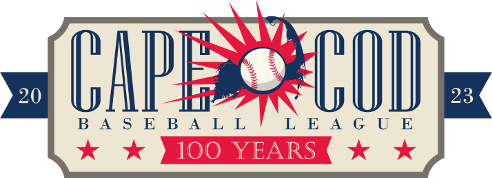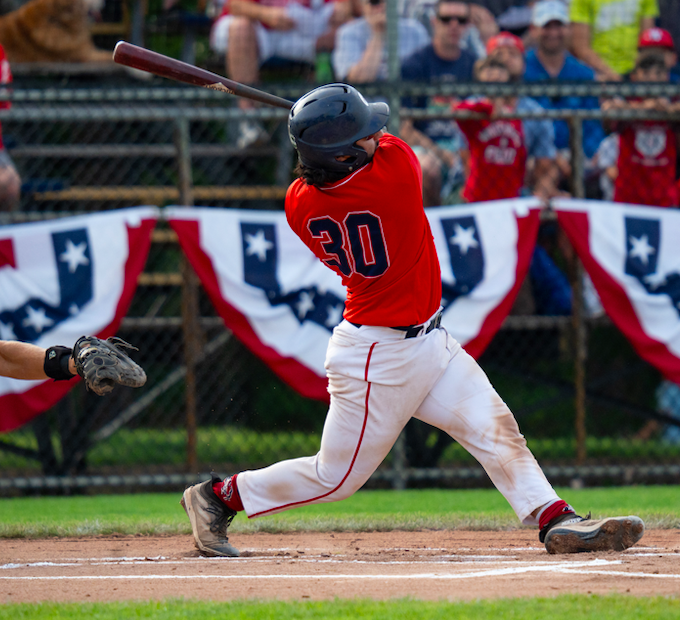By Ben Strober
As the sweltering summer months roll in every year, thousands of college baseball players at all levels journey across the nation to numerous collegiate summer leagues.
All leagues are unique in their own way. From the geography, to the traditions or just the level of talent showcased. However, the one constant? The leagues are all wood bats only.
This means change for everyone. A typical college season in the NCAA is between 50-60 games, and most hitters use strictly metal.
After all those at-bats using the aluminum, players must adjust to not just moving to a new home with a new group of guys, but also the most crucial object in the sport.
How do the players feel about these wood bats? Is it more challenging for them to hit? Do they actually prefer it? Well, these answers vary depending on the person.
One thing’s for sure with these wood bats; it’s more challenging to hit. Many players actually embrace that challenge.
“I really got to square up on the ball to get it somewhere,” Yarmouth-Dennis catcher Will King said. “You have to find a barrel.”
At school, King uses a metal bat like most. That doesn’t mean he likes it more. In fact, he actually prefers wood.
“I usually train and warm up with a wood bat,” King said. “It helps me work on squaring up the ball.”
King slugged 12 homers in his junior season at Eastern Kentucky. With the wood bat, King’s hitting success came instantly, but the power trailed.
After a couple of close calls in some really deep ballparks, King finally found a barrel and crushed his first homer of the season on June 28th.
King hit north of .300 in the spring and it’s no fluke that he’s doing it again. His .326 average cements him into the league’s top ten — and even more impressively — he’s only struck out twice in 46 at-bats.
It’s evident that earning a knock with a wood bat takes more. Hitters enjoy the new challenge, but the pitchers love it even more.
“Getting to pitch against the wood bats in the summer is like a bonus,” Red Sox pitcher Khal Stephen said.
Stephen said there’s a lot more room for error when facing wood bats because it’s more challenging to hit the sweet spot.
Stephen reiterated that wood bats often prevent ticky-tacky bloop hits that come off the handle or end of the bat.
“Those kinds of hits happen every single game,” Stephen said. “It’s a guarantee.”
Stephen said pitching in the summer reveals more confidence in himself when on the mound, and the same is said for YD’s Matt Fernandez.
Fernandez turned in 52 innings of work at Pitt in the spring and already had seen significant innings in Yarmouth.
“I feel like the hitters aren’t as confident with a wood bat,” Fernandez said. “I think the ball travels a lot further off the metal, and the batter believes that too.”
Fernandez said he’s been extra confident this summer because he can throw fastballs on the hands of hitters, forcing weak contact.
Jam shots on a metal bat sometimes end in bloop singles. Wood bats, however, end in wood scattering across the infield.
“It’s really rewarding as a pitcher when you break a barrel,” Stephen said.
Stephen delivered five dominant scoreless innings in Brewster in his last start. After the Red Sox capped off that 2-0 win, Stephen couldn’t stop smiling as he left the field.
“I love pitching to the wood bats right now,” Stephen said in a postgame interview.
Stephen and Fernandez said the wood bat allows them to throw pitches differently than they would in their school season, based on different situations.
For example, Fernandez said he throws first-pitch sinkers when he’s in a jam because it forces weak contact, usually something on the ground.
Hunter Hines hit a team-leading 22 home runs at Mississippi State in the spring. Obviously, those sprung off metal, but if you watched Hines in the first half of this summer, you’d never know there’s a difference.
“I like the wood bats better,” Hines said. “You’ve got to hit the ball more square to get pop.”
Hines has certainly barreled with his wood bat through the first 16 games. His 6 bombs lead the Cape Cod Baseball League.
Hines only needs one more jack to tie Tyler Johnson’s seven homers, which topped the entire CCBL in 2022. Keep in mind, it’s not even July yet.
Four others in the league sit tied for second with three homers, with one of those being YD’s Nathan Archer.
Archer said he prefers wood, and it’s a more satisfying feeling as a hitter to succeed with wood.
In pro baseball, whether it’s the Major or Minor Leagues, wood is required.
The CCBL is loaded with rare talent. It’s undeniable that many in the league will move on to some form of pro baseball.
“I feel like these summers using wood help prepare me for a potential pro career,” Archer said.
For this reason, players like Hines, King, Archer and many others became accustomed to training primarily with wood.
The transition from playing with metal to wood isn’t as hard on the players as one might think. Much of that is likely because of their training regimens.
King used his first wood bat when he was 13 years old, and he’s loved it ever since. As a potential pro career looms for the young catcher, he’s got many more wood-batted swings in his future.
“It feels like I’m playing real baseball,” King said. “I’ve always loved wood.”
































